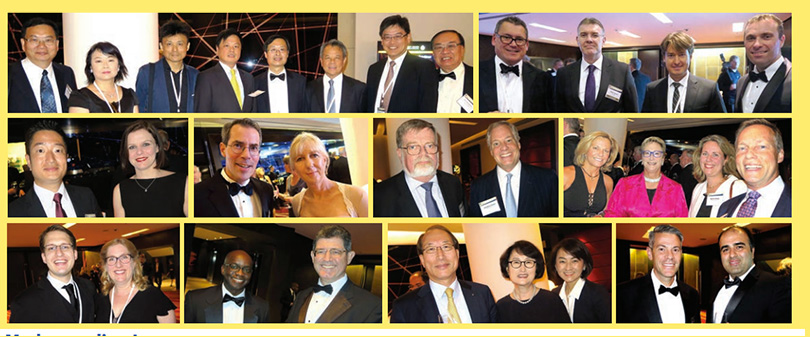Welcome to GIF 2017!

Welcome to the 53rd annual conference of the IIS, the Global Insurance Forum. It’s only been three years since we last convened in London, and yet the industry has undergone more change than in most decades of earlier times. The pace at which environmental concerns, cyber risk manifestations, genomic research and insurtech developments, among other issues, have disrupted our industry is unprecedented.
Against this backdrop of challenges and opportunities for both incumbents and newcomers, the IIS is grateful for your presence and participation. Our programme this year begins on Day One with The State of the World, an overview of key global and market sector concerns. Day Two will be The State of the Art, a focused set of presentations on top industry developments and activities. Day Three is devoted to the Insurance Development Forum, and titled The State of the Future, featuring a rich mix of public and private sector leaders showcasing the insurance industry’s plans and achievements in reducing the protection gap.
This is my 24th annual IIS forum, and I believe we have put together the best program ever this year. I encourage you to not just attend, but participate actively. The greatest value of our multi-stakeholder membership is that by sharing our diverse ideas and perspectives, we generate new and better ideas. Enjoy!
Mr Michael J Morrissey,
President and CEO, International Insurance Society
A truly global agenda calls for real collective action
By Sivam Subramaniam, Editor-In-Chief, Asia Insurance Review

This GIF in London, in the throes of a sombre summer with Brexit looming, will stand out for its truly global agenda for the insurance industry, not just in terms of regional spread, but also in its coverage of all issues.
It has something for everyone and touches on everything the insurance industry needs to tackle – from resilience, protection gap, talent, cyber threats, regulations for sustainable development to plain old emerging market issues and beyond to disruptive technology, InsurTech and even genetics and data.
My priority for action goes to value creation – to boost the real value of insurance to people & corporates and economy & society. The real value of insurance still remains unappreciated by the buyer, this despite the old refrain that without insurance no business can be transacted, no ships can sail, no trade can be done, and no loans made.
Running for cover from insurance
Yet, SMEs, the core of most economies are still running their businesses without insurance. Even as governments set aside special SME funding, they do not give many incentives to SMEs to buy insurance. Most governments do not even begin to see insurance as a capacity builder for these SMEs. They see insurance as something that is just a “nice to have” for these SMEs struggling to raise funds for the next big venture.
The insurance industry is all alone and therefore must come together to start from ground up to rebuild the image and value of insurance to the buying public. We must dream of people and businesses gagging for insurance!
Simplify products
CEOs must wake up to the reality that buyers of any product will feel cheated if they got nothing from buying that item. An insured with no claim during that policy period does get that hollow feeling of having been taken for a ride or that the purchase was a wasted investment.
So the industry has to work on making non-claimants still appreciate the value of that insurance even if they made no claims. This is the enlightenment that what they bought is that “peace of mind” – that they paid the premium to be reassured that should that “bad” thing they fear happening occur, they will at least be no worse off financially with insurance to indemnify them.
The second stage of the campaign is to ensure that insureds actually know what they have bought and not leave explanation to exclusion clauses and fine prints.
The impact of denied claims raises the angst and public ire that buying insurance is just money down the drain.
The Asia Claims Management Conference last month revealed that denied claims really hurt the image of not just that denying insurer but the whole industry. And even if the denied claim is fully legitimate, the sympathies are with the insured.
The solution is logically to sell a simple product that both buyer and seller know are covered or not-covered. Imagine selling a cancer product whose cover only kicks in at Stage 3 while the customer has gone to pieces at his Stage 1 cancer diagnosis. Can any claimant see the denial as legitimate? Can any human sympathise with the insurer, legitimate though it is in denying the claim?
Simplify the product. Make it bite size and offer it in modules in unequivocal words.
Engaging the customer
In the era of social media and Gen Y dominance, insurers, even at the highest level, have started talking of customer engagement. So there is hope yet. We are on the right track to win over people who will truly appreciate the real value of insurance. They buy because they need that protection so badly and know that only an insurer can help them manage that risk!
Engage the client. Keep him engaged to see you as his friend. And the industry would have found a PR representative in him. This can become a compelling collective global action. Learn from the IIS and its Ambassador network to get your customer engaged as your brand Ambassador. The world will then be your oyster beyond all borders.
China’s ZhongAn Insurance and the Singapore unit of FWD are the insurance equivalent of Netflix in the TV industry, Expedia in the travel business and Amazon in retail. Here, the digital players share four tips to getting the online game right.

1. Customer centricity
Consumers, shaped by their highly personalised, self-directed and instantly gratifying digital experiences in other sectors, have come to expect similar service from insurers. Nowhere is this more apparent than in China, where mobile internet and e-commerce rule, especially with the young who operate almost every aspect of their lives via their mobile devices.
Reinventing claims settlement
Automating claims processes and boosting customer convenience are top considerations for ZhongAn when it designs a product. It wants to turn claims settlement from a passive to an active process, through integrating with third-party data sources, said Mr Chen Wei, a head at ZhongAn Insurance who is also CEO of its wholly-owned subsidiary ZhongAn Technology.
For policies where claims settlement cannot be automated within a short time, ZhongAn provides self-service options for trusted customers with a good pre-established credit standing.
Asking fewer questions
For FWD Singapore, inspiring customer demand by anticipating and holistically addressing customer needs and wants, comes in the form of shortening the number of questions that potential customers need to answer online before they can receive a quote on their life and general insurance policies.
Mr Abhishek Bhatia, CEO of FWD Singapore, said that requiring consumers to answer close to 30 questions just to get a quote often leaves a bad taste in customers’ mouths.
Thus, FWD scrapped questions on personal details which only served to feed insurers’ intentions for cross-selling, and questions on risk factors that did not significantly affect pricing.
“If the five extra questions helped to refine pricing by just one more percent, we would give up that one percent and not ask those questions,” he said. That helped to bring the number of questions for a motor policy quote to 10, and travel policy, to five.
2. Talent
The online insurers are also sectoragnostic when it comes to drawing talent, frequently plucking hires from disparate sectors in the belief that digital competency matters more than industry knowledge.
Among ZhongAn Insurance’s hires, a third are top IT and digital talents, and another third are hired from outside the finance sector.
Only one third of its employees are from the financial sector. Most of its digital talents hail from top technology companies such as Alibaba, Amazon and Facebook.
3. Technology
Online insurers leverage high-speed, agile technology infrastructures that focus on customer engagement systems and that can support digitisation. For ZhongAn, the first company in China to build an open-source core system on a cloud, the fragmented, highfrequency nature of its insurance business model poses high demands on its IT infrastructure.
For instance, during the Alibaba Singles Day shopping event, ZhongAn’s proprietar y sys tems facil i tated a heavy volume of nano insurance, processing to the tune of 10,000 transactions per second. By comparison, Visa, at peak trading volume, clocks 14,000 transactions per second.
ZhongAn’s FinTech strategy is anchored on five driving forces, which the company has coined its “ABCD Strategy”. “A” stands for artificial intelligence, which has the ability to draw the business closer to the activities of everyday life; ”B” denotes blockchain – to optimise data collection cost and increases data processing efficiency; ”C” for cloud computing, to augment finance costs and efficiencies; and ”D” for data, to improve risk management and drive business.”
4. Culture
Successful digital firms are distinguished by more than technical expertise. They invariably have a corporate culture and an organisational model that create the conditions for digital excellence.
For FWD, this means cultivating an internal environment that constantly encourages its people to push towards the future, even at the risk of failure.
“The tone is set straight from the top, that if you try 10 different things, but only three work, it is within the risk appetite. Failure is not frowned upon,” said Mr Bhatia.
Planting the seeds for the future of insurance

Singapore College of Insurance’s (SCI) CEO Karine Kam says creating the right talent infrastructure is critical in attracting new blood into the insurance industry.
How should insurers approach talent management?
Technological innovation and disruption, the growing use of data analytics to drive decision making, and changes in consumer behaviour will impact all kinds of industries, not just insurance. Business models will change, there will be mismatches in skill sets, new jobs will emerge and old jobs will fade away. Plus the rise of the millennials with entrepreneurial mindsets and a technologically-savvy new generation will present both opportunities and challenges in talent management.
A multi-pronged coordinated approach with involvement from all the stakeholders, companies, regulators, and training providers is needed. Whilst in-company talent initiatives are still lauded, there is synergy and a greater impact if HR practitioners can come together and partner with the SCI in attracting and developing new talent.
How has SCI adapted to meet the growing challenges faced by the industry, and what are the upcoming talent programmes that SCI is developing to fill the gap?
Two years ago, we conducted a “talent needs survey of Asian insurers, now and in the near future”, in collaboration with LIMRA. Not surprisingly, the results show that analytics/ modelling, risk management, FinTech, specialist underwriting, compliance and claims came up as top skills areas needed by the industry. A resounding 90% of the respondents listed Leadership Skills as very important to the growth and success of their companies.
In 2014, the SCI unveiled a structured and comprehensive Insurance Industry Talent & Leadership Development Framework. At the heart of this framework are pieces that focus on Young Talent, Specialist Talent and Leadership Talent.
Our Young Talent initiative-Insurance Management Associate Programme, supported by the Monetary Authority of Singapore – attracted more than 150 top young talents from disciplines ranging from economics to mathematics to fill positions in 56 companies across the different segments. The retention ratio has been more than 80% for these fresh graduates that we had brought in since 2009 for the industry through the Programme.
This goes to prove that if a proper talent infrastructure is built, they will come. Insurance is increasingly gaining greater consideration in the mind-set amongst our school-leavers looking for fulfilling careers, and I urge more insurance employers in Singapore to support the initiative and together help build a sustainable long-term pipeline of talent for the industry.
Our Specialist Programmes focus on new skills areas that have emerged, such as catastrophe management, terrorism and cyber risk and other specialist areas of underwriting, risk management, compliance, data analytics, InsurTech, as well as deepening the expertise of practitioners in the traditional fields. As the industry restructures and remodels itself, existing practitioners will need to be re-skilled and up-skilled as job demands will change.
On the Leadership front, we are working with world-class universities to deliver two industry-relevant leadership programmes – the NextGen Insurance Leadership Programme and the Global Insurance Leadership Programme. Our experience in driving the Young Leadership and Advanced Leadership Programmes for the ASEAN Insurance Education Committee has deepened our domain knowledge in shaping a leadership curriculum that is attuned to the needs of insurers operating in the larger Asian context.
ASEAN (Association of Southeast Asian Nations) as a whole will undoubtedly remain as the main engine of growth in Asia, where business opportunities abound for insurers with the right mix of strategy and resources.
How do you expect the role of an educational service provider like SCI to change?
Fundamentally, the role of SCI will not change. What will change is the way programmes are delivered, driven by changes in the way today’s learners want to learn and the intense pressures on their time that make it difficult for them to be in classrooms for long periods of time.
Some insurance segments are also seasonal in their business cycles and can send their employees for training and development only during certain periods of the year.
So what SCI needs to do is to restructure the way it delivers its programmes, using more e-learning and just-in-time, bite-sized learning modes. However, the benefits of cross-fertilisation of ideas and networking opportunities afforded in a classroom setting cannot be overlooked, so SCI has to find innovative ways of opting the various elements of a training programme.
SCI was a winner of the Educational Service Provider of the Year Award at the 20th Asia Insurance Industry Awards (AIIA) last year.
A better world through insurance
With new risks constantly emerging, it’s up to the global insurance industry to help safeguard society. We talk to some leading industry figures to get their take on how insurance can help the world become more resilient.

“Insurance can play a vital role in providing safety, security and stability across the globe as the world faces an ever-changing risk landscape. With increasing urbanisation and the concentration of populations and infrastructure in major urban centres and economic hubs, businesses and governments need to ensure they remain resilient to the challenges and threats they will face. Whether that be from natural catastrophes or man-made events – it is important that the risk is transferred through international insurance and reinsurance markets, enabling countries and economies to get back on their feet quickly in the face of disaster. “Our work on the City Risk Index, which looks at over 300 of the world’s most important cities, revealed there was still significantly high levels of underinsurance in some of the faster developing economies. The role for insurance is to help those cities understand the value of risk diversification in protecting their long-term economic growth.”
Ms Inga Beale,
CEO, Lloyd’s

“Insurance is a financial cushion for all walks of life and particularly vital, in rebuilding efforts post natural catastrophes. The industry has already undertaken significant measures, with respect to encouraging resilience, such as innovative financing and risk transfer mechanisms. Where insurance can do more is with better cat modelling, establishment of data collection and monitoring systems, promotion of climate resilient technologies and related infrastructure and encouraging appropriate policy initiatives.
It is also important for communities to understand that climate insurance cannot be considered in isolation and must be part of a broad composite adaptation strategy where it can serve to complement local community based defence and firstresponse mechanisms”.
Mrs Alice Vaidyan,
Chairman-cum-Managing Director, GIC Re
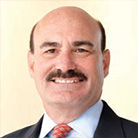
“As an industry, we need to help close several gaps to increase resilience. At the economic level, we need to close the gap between total losses and insured losses when disasters strike. At the environmental level, we need to work with government and outside bodies to tackle climate change and related issues going forward.”
“At the product level, we also need to close the gap between awareness and usage and increase penetration of many vital covers. The increasing exposures related to cyber-attacks or terrorism, for example, will most certainly result in further fundamental shifts in how insurance premiums are determined and structured. As an industry I think we still have a lot to learn about the full extent of cyber risk.”
Mr David Fried,
CEO, Emerging Markets, QBE Insurance Group
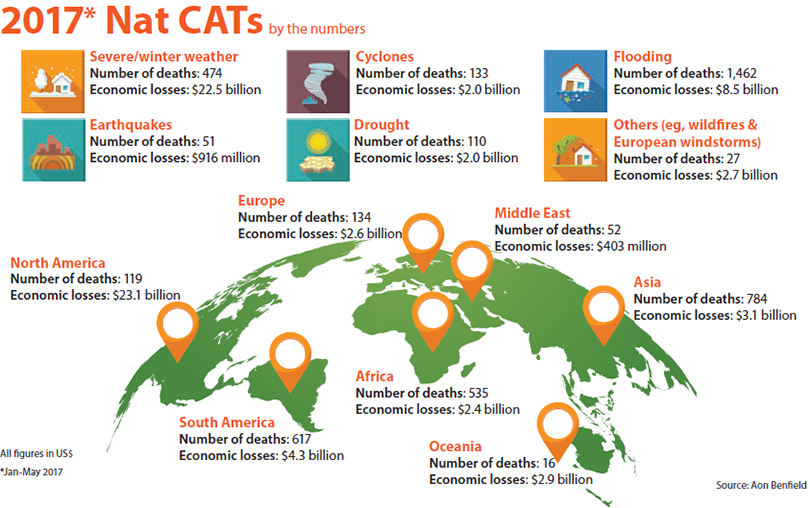
Be open to stay in business
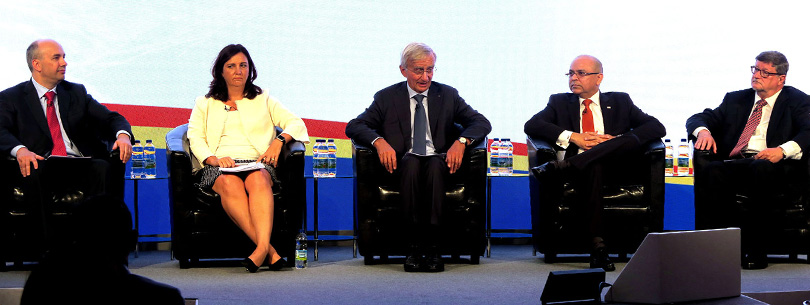
Insurers have to be agile and ready to co-create with those from outside the industry as part of the new digital-led insurance ecosystem, said speakers at yesterday’s panel on developed market dynamics.
Mr Denis Duverne, Chairman of the Board at AXA, said insurers are moving from merely being payers to becoming genuine partners in improving the well-being of customers. And this would require new skill sets which can be acquired through partnerships, especially with the insurtech community.
“Fintech and insurtech companies have great talent, knowledge and imagination, while insurers have the customer base. So I see a partnership between insurtech and insurance companies as the way of the future,” he said.
Sompo America’s President & COO Lisa Davies also highlighted how insurers need to modernise from being just a traditional risk taker to also being a service provider, which means engaging customers beyond just an insurance transaction.
“At Sompo, we’re looking to evolve into a ‘theme park’ business model. If you go to Disney World, you go for the rides, but you also can’t leave without buying the food or the souvenirs. In the same way, what we’d like to do is make insurance our main business, but also move into other things as well.
“Our motive is to be a ‘theme park’ for the security, health and well-being for our customers. So we’re looking to find ways to touch them throughout their lives and not just when they have a claim.”
For example, in Japan, Sompo offers additional services such as nursing care and home remodeling, she said.
New risk landscape
With increased connectivity and the prevalence of IoT in the developed markets, insurers are having to deal with a rapidly changing risk landscape where many risks reside beyond physical assets, said Mr Gaurav D Garg, CEO of Personal Insurance at AIG.
He also cited how liability is moving from first party to third party, as in the case of driverless vehicles where it is unclear whether the driver or software manufacturer would be liable in an accident. Another example quoted is whether an end-user of a device should be liable in a loss event when he or she had failed to update the software.
“Insurers need to identify the various gaps in coverage and come up with new ways and products to fill these gaps,” he said.
Fitting into sharing economy
“Meanwhile, Ms Davies said the industry needed to align itself with the realities of the sharing economy, whereby the line between personal insurance and commercial insurance becomes increasingly blurred as assets that were intended for personal use are also being used commercially.
“So developing products and services that you can opt in and opt out, depending on the use of that product, is very important for us to capitalise and not to lose customers because if we don’t, then there are assets that will move out of the commercial insurance platforms.
“And it becomes cost-prohibitive for people when they have to buy separate insurance,” she said. That explains Sompo’s recent investment in Trov – a provider of on-demand insurance for individual items.
Innovation
Innovation certainly needs to happen at a quicker rate in the insurance industry, although some momentum is building up in the area of savings and retirement amid ageing trends in many parts of the world, said Mr Michael Sherris, Professor of Actuarial Studies at the University of New South Wales.
“There is a lot of innovation that is happening and will have to happen in many countries, especially those with DC schemes with large groups entering into retirement, and there are moves towards products which combine retirement income with other needs such as long-term care.”
Ms Davies added insurers needed to continually garner new ideas from outside the industry, to complement recent efforts in building innovation labs.
The panel discussion was moderated by Mr Ken Mungan, Chairman of the Board, Milliman.
A GIF to savour

Mr Michael Morrissey, President & CEO of the International Insurance Society (IIS) opened the 2017 Global Insurance Forum (GIF) on an upbeat note saying this year’s programme was the best that his team has put together in his 24-year association with the event. With 71 speakers from 21 countries, it will certainly be a comprehensive and hopefully robust discussion in the coming days.
Brexit: Get the narrative right
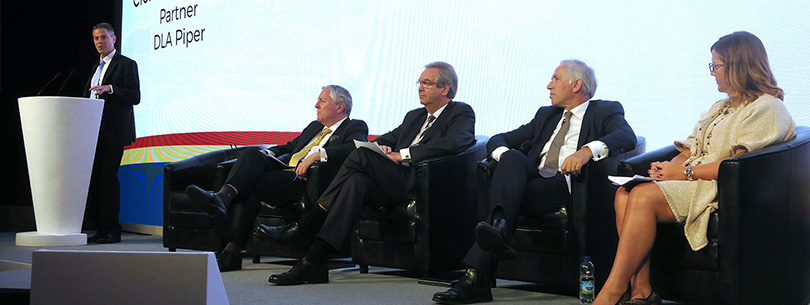
The complications involved in Brexit are well-documented and heavily discussed throughout the government and the many industries within London. However, Lord Tim Clement-Jones, Partner at DLA Piper, argues that if the insurance industry ”gets the narrative right”, London can and will remain relevant on the global stage.
“We remain at the forefront of AI, technology and innovation in Europe, and even across the globe. If we can focus the narrative on those developments rather than the Brexit process, the insurance industry here will still remain a relevant driving force even after Brexit,” he said.
Opportunities for penetration
Speaking at the panel on Brexit at the IIS Global Insurance Forum, Lord Clement-Jones and three other panellists – Ms Karen Briggs, Partner and Head of Brexit at KPMG; Mr Roy White, CEO Specialties at Marsh; and Mr Benno Reischel, Head of Europe at Lloyd’s – along with panel chair Mr Anthony Baldwin, CEO EMEA at AIG, touched on the opportunities that could come out of the transition.
“The fact that London is a fintech and innovation hub is an opportunity we need to explore. We have a deep talent pool we can draw on, and the industry needs to continue developing talent and allowing talent to enter the London market,” said Ms Briggs.
Currently, over half of the insurers in the UK already have plans in place to domicile or have subsidiaries in other major cities in the EU, according to Mr Reischel. Popular destinations include Frankfurt, Luxembourg and Dublin, due to experienced regulators, a skilled work force and long-standing expertise in the financial services.
“Being on the continent will help build confidence amongst your clients,” said Mr Reischel. “There is significant room for penetration within the EU, mainly due to emerging risks such as cyber, of which the London insurance industry still leads in terms of product innovation.” Meanwhile, Mr White urged the London market to continue re-focusing its efforts in the emerging markets.
“Even though the EU is an important market, our clients in the UK have already turned towards opportunities in the emerging markets and that is where the future will be,” he said.
Settling messy divorce bill There is still a lot of work to be done. The panel touched on the myriad of complications and details leading up to the separation deadline in 2019, with Ms Briggs adding that much contingency planning and detailed preparation work needs to be completed within the next two years. Worryingly, some organisations have been slow to come off the block. “Waiting to see what will happen is a dangerous prospect,” she said, noting that there is not a lot of time left to get everything done.
“We definitely need a transitional period to prepare for the move,” she said. “And as business leaders, we need to work with the regulator to aid them in their preparations, as they not only have the transition to worry about, but also looking into emerging products and technologies that are coming out of the industry.”
However, Lord Clement-Jones states that much of the regulatory discussions will be shaped in the corridors of Brussels with the UK set to lose influence over EU financial services regulation. “The UK regulator will be set to receive, not transmit. They will be involved in the implementation, obviously, but they will be taking their cues from Brussels,” he said.
The future is here

Favourable demographics and a dynamic workforce were some reasons highlighted by panellists on why the emerging markets of EMEA and Asia are shaping to be the driving force in insurance.
Mr Steve Tunstall, General Secretary of PARIMA, when speaking on the insurance markets in ASEAN, said: “Unlike in the ‘old world’, the new world of Asia and ASEAN is enthusiastic and active. Many young, new people are entering the industry and they have lots of enthusiasm for it. Insurance is an attractive option for them.”
Speaking on insurance prospects in Nigeria, Mr Wole Oshin, Managing Director, Custodian & Allied, said: “We’re predicted to have the third largest population in the world by 2050. So from a demographic perspective, there is a huge opportunity that MNCs have begun to realise. We have many millennials, and currently, lots of infrastructure spending. It’s a market for the future.”
Mr VK Sharma, Chairman, Life Insurance Corporation of India, touched on the attractive demographics in the Indian market: “The regulator focuses on policyholder protection rather than trying to control the insurer. From a sheer demographic point of view, this is the time to be in India. In a population of 1.3 billion, 65% are under the age of 33% and 90% of the population have yet to be insured.”
Mr Yassir Albaharna, CEO, Arab Insurance Group, believes early movers in the Middle East will eventually reap their rewards. “One thing people don’t often realise is that some of our markets are in Asia, while some are in Africa. Much like in ASEAN, we have different segments and not one solution will fit all.
“Generally, the region has a low penetration rate of only 1.38%, but has potential for high growth. A long-term view, taking into account population and wealth growth in the region, is required to truly break into the Middle East markets. The true potential lies in personal lines, pensions and similar classes of business.”
Behaviour corroborates attitude
Attitudinal data is now mainstream news, but behavioural data is the real story at the intersection of marketing, user-experience and technological integration.

As traditional demographics fast become blunt weapons when it comes to profiling, targeting and personalised propositions, brands are increasingly turning to social data to add personality to their insights. But even more incisive tools are needed to cut through the noise of today’s marketplace.
With consumers now too complex and nuanced to be fully understood by narrow, traditional demographics, attitudinal data has come of age, demonstrating its worth in personalised marketing campaigns which are swinging elections and flogging mules.
Attitude problem
In an era of filtered profiles and fake news, they will undoubtedly be posed, processed and filtered to the nth degree – an idealised version of the self which provides questionable value.
In that context, even attitudinal insight is an unreliable predictor, a prisoner of assumption which fails to provide deep enough understanding of consumers’ wants and needs.
In the economy of one, where consumers expect brands to market to “Who I am” rather than “What I am”, only real behavioural data gets to the heart of the matter. The veracity of this data removes the filter for behaviour laid bare – actual behaviour reflecting real concerns and interests.
What personalisation is crying out for is a willingness to share verifiable data to corroborate the attitude.
Health at the heart of Life
In the hierarchy of cognition, behaviour is attitude and values enacted. In other words, behaviour corroborates attitude. And one behaviour that cuts across generations and types is the desire to lead a healthy lifestyle.
Health matters just as much to Millennials as it does to previous generations, a recognition of the age-old truth that health is the key to life. Whether muscling up, maintaining balance or managing decline, people of all ages are demonstrating a determination to lead healthy, independent, rewarding lifestyles for as long as possible.
And, just as in other aspects of their lives, they are determined to manage that healthier lifestyle with the technology they have at their fingertips.
Responding to that desire with technological innovation, health and wellness platforms open a channel for communication, facilitating the conversation between customer and provider, providing actual behavioural insight to corroborate the attitudinal insights which drive contemporary marketing decisions.
It is a transformational partnership which is truly customer-centric, putting them in control. The best contemporary platforms provide meaningful content to help people effect real lifestyle change – and generate a wealth of personal behavioural data from which to create compelling customer experiences that open new revenue channels for all involved in the ecosystem.
And the focus on healthy living rather than death presents insurers with a great opportunity to change the narrative, helping customers lead healthier lives rather than forcing them to contemplate their own mortality.
The attitude to corroborate
While the consumer is beginning to understand how their data drives precision marketing, a willingness to share data is still a mixed bag – ranging from 41% of respondents in Germany to 85% in South Africa – and data privacy and security remain unresolved issues, with deepseated consumer fears of data misuse and abuse exacerbated by global viruses and hacks.
The challenge now is to use the growing awareness of the power of marketing, and the growing sense of the value of one’s data, to allay these fears.
It is vital, at this early stage, that we counter the fear-mongering by forging partnerships with the customer, putting them in control to convince them that sharing data is an opportunity rather than a threat.
A collaborative approach to the sharing, use and safeguarding of data is the key to an effective consumer experience – and the surest path to the right protection. In this economy of one, a willingness to share data on a scale and depth way beyond name rank and serial number changes the spectrum of possibility.
For that, a willingness to share data is the most prized attitude of all.
This article was first published in June 2017 at www.remarkgroup.com.
Friendships renewed
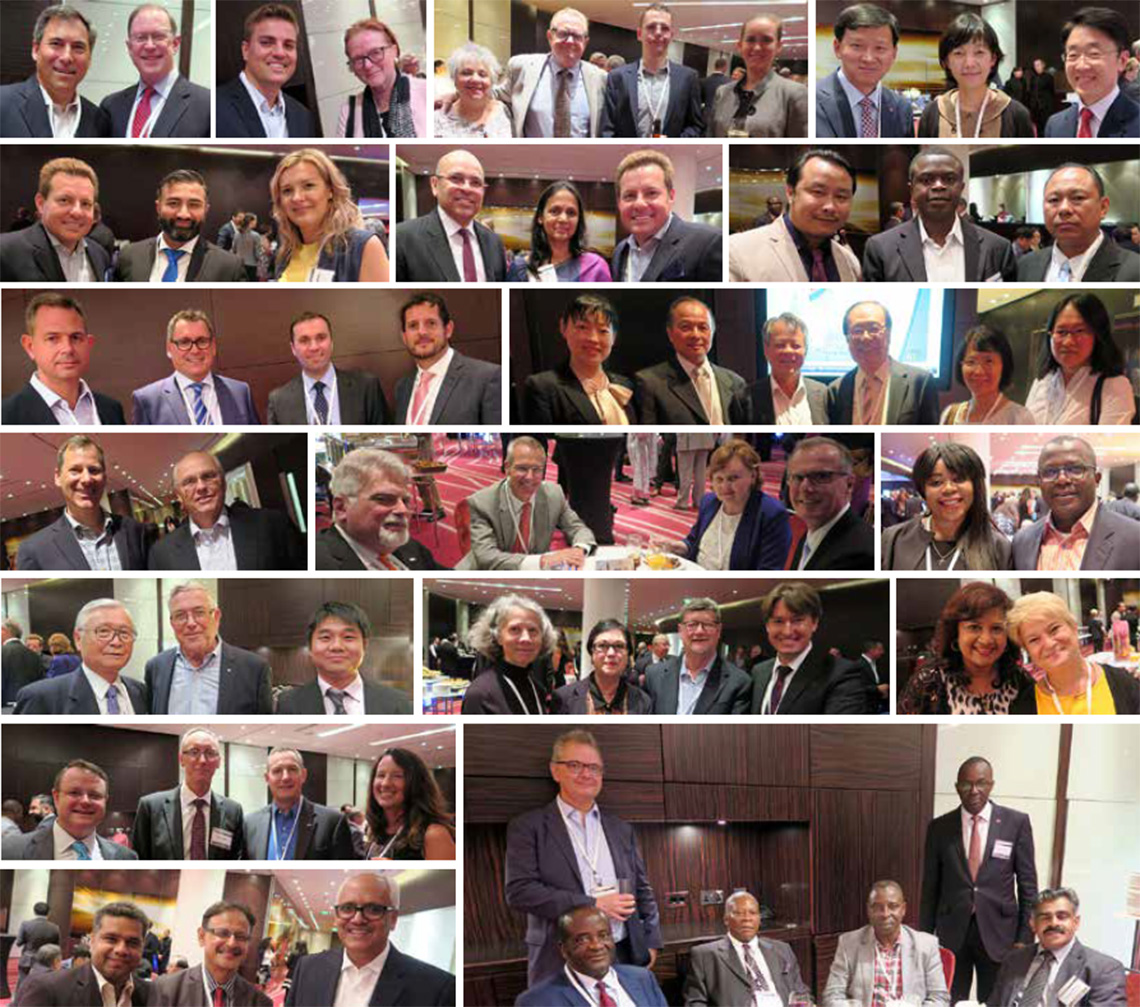
Asia: Next EAIC will be in May 2018

At its meeting in Manila last Friday, the EAIC Executive Board has set the dates for the 29th East Asian Insurance Congress to be from 6th to 9th May 2018 in Manila, in summer rather than in the traditional fall period.
Chairman of the 29th EAIC Organising Committee Mr Ramon Dimacali said the Congress, to be held at the Marriot Grand Ballroom near the airport, will have the theme: “Managing Disruptions, Driving Change”. The Conference will aim at being different to ensure that it not only tackles the current challenges of the day, but also offer solutions and strategic tips to cope with the problems and guide them to emerge winners as well as providing for extensive networking opportunities for the delegates.
But more importantly, the EAIC will strive to draw more life market players as the conference is aimed at the whole insurance industry both life and general, and not just the non-life players.
Mr Augusto Hidalgo, Chief Delegate of the Philippines said the earlier dates were chosen taking into account the various potential scheduling conflicts in the market and to draw the maximum number of people from around the world. The Conference will also attempt to draw delegates beyond the 12 EAIC markets as well as young insurance professionals within the region. The programme will also draw from the expertise and talent within the Philippine business community and the TED talks.
Insurers must lead the way in Artificial Intelligence

The insurance industry has to be at the forefront of Artificial Intelligence (AI) in order to stay ahead in managing risk.
Speaking on the InsurTech panel yesterday, Mr Chris Wei, Global Chairman, Aviva Digital, said insurers are under threat of being disrupted from a data standpoint.
“It is rather scary how large incumbent digital players are all wading into our space and I’ve told my executive team that we’ve got two years to sort this out to stay ahead, and during that two years we will have to translate our mental intellectual property into AI rules.
“If we don’t do that fast enough, then we will be disrupted and we will have that Kodak moment,” he said.
Mr Reza Khorshidi, Chief Scientist, AIG, said insurers should adopt an AI-first approach in shaping user experience.
“There is a consensus in the industry that AI can help, and so we need to bring in more AI talent and let them map the AI world to the insurance world and create synergy between the two.
“If AI is going to be a competitive advantage, then relying on vendors is risky so we really need to have the talent in-house,” he said.

Connecting with customers
Ms Donna Peeples, Chief Customer Officer, Pypestream, highlighted that it was important that insurers deepen their engagement with customers by being where they are and providing a seamless experience.
“Insurers are adopting an omni-channel approach, but we need to connect the dots and make the experience all the same no matter where our customer goes.”
She added that as part of creating a superior customer experience, insurers should look to automate their business processes as much as possible. Touching on Aviva’s case in partnering with Chinese tech giant Tencent in Hong Kong, Mr Wei said Tencent’s approach to creating an integrated and seamless experience for its customers on its ubiquitous WeChat platform is something that insurers can learn from.
WeChat is China’s most popular chat app with 900 million users, half of whom spend 90 minutes per day on the app. This is because WeChat serves many functions, including paying bills, ordering goods and services and transfering money to other users.
“If we can deliver a seamless experience for customers, then you have a good chance with insurance,” he said.
Mr Matteo Carbone, Founder of Connected Insurance Observatory, urged insurers to build a business model that provides greater ease to customers. Panel moderator, Mr Nick Martin, Fund Manager, Polar Capital, concluded discussions by saying that InsurTech is not a zero-sum game and that insurers stand to benefit a lot from the nascent industry.
Cyber: Risk and rewards aplenty
Discussion on the executive panel on cyber risks began on a rather gloomy note, with panellists saying that Lloyd’s prediction this week of a US$120-billion hit to the global economy due a cyber attack was too conservative.
“Right now, cyber attacks are aiming for widespread disruption and destruction. It will reach beyond the computer and the cloud and have a real impact on the physical world,” said Mr Michael Bahar, Partner at Eversheds Sutherland.
Mr Peter Hacker, Co-founder of Distinction Global, concured, stating that future key exposures of cyber will be in non-physical triggers that have physical consequences, such as bodily harm and property destruction. “Like earthquakes, cyber could have real impact on a global scale although unlike quakes, they are man-made and they are systemic,” he said.
Even a few hours of disruption in services will be enough to cause devastating consequences on businesses, said Mr Matthew Martindale, Director of Cyber Security at KPMG. “Businesses are very reliant on cloud services now, and if there is a systemic attack that brings down the cloud, some companies might go out of business entirely. They might not be able to last long enough without the cloud to service their clients.”
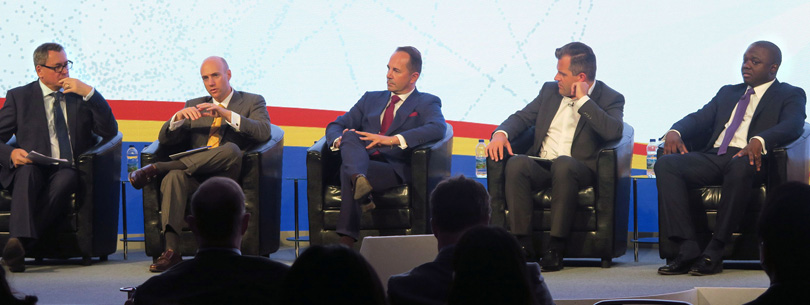
A silver lining
However, there is an opportunity for the insurance industry to help plug the gaps and blind spots that many companies are currently facing. With technology becoming increasingly necessary for the world to run and for businesses to succeed, the exposures are many.
“When you adopt new technology, you need to look at risk differently and build redundancies to protect yourself,” said Mr Jamaan Sane of Beazley. “This is where insurers can come into play.”
Beyond exposures caused by new, possibly untested technology, Mr Bahar also brings up third-party risks, especially for any company that might rely on a supply chain. “Many driverless cars being manufactured now are being built with cyber security inherent in the system, instead of it implemented as an add-on after the car is complete. But are each of the individual components in those cars cyber protected?” he said.
Through insurance, best practices can be encouraged and enforced, the same way it is done in motor insurance or health insurance with Vitality programmes, said Mr Bahar. “We need to get board members involved in order to create holistic solutions. It is not just about IT, it is about judgment and leadership now.”
No longer an IT problem
“Cyber risk is fundamentally a topic for board members to tackle,” said Mr Hacker. “But more than 50% believe that it is an IT security matter.” However, Mr Sane was more optimistic: “We are seeing a shift away from that mindset. From our perspective, we want to see the risks and the impact to the business, so we want to talk with the business side of the company, not the IT side. However, we have seen more collaboration within these different levels of a company.”
“Finding out what software a company uses is pointless, as that software might be obsolete in six months. We want to look at behaviour and governance within the company,” he said.
“Decision makers want to see actionable intelligence and more concrete data that shows them how much money they might lose or save. Insurers can step in to provide this data and these models,” said Mr Hacker.
Using nature as a bulwark against risk
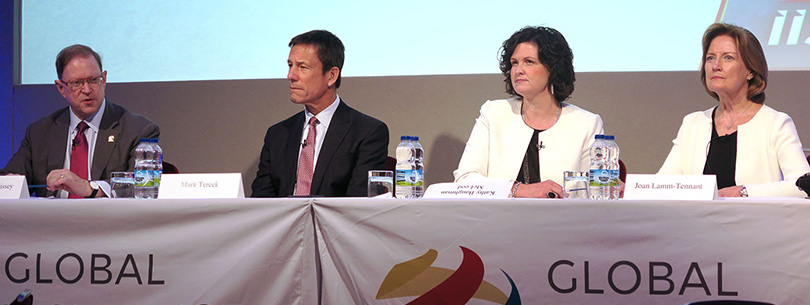
A first in IIS history, an environmental organisation took the stage to speak on the value of nature in the insurance and risk management industry. “Natural structures such as coral reefs in Mexico and mangroves in Asia act as a buffer and dampener against coastal catastrophes, so their value in reducing risk is evident,” said Mr Mark Tercek, President and CEO of The Nature Conservancy (TNC).
Joined by Managing Director Kathy Baughmann McLeod, TNC has partnered with Blue Marble Microinsurance, led by CEO Joan Lamm-Tennant, and has been urging the insurance industry to make greater efforts in protecting and conserving such coastal natural structures, as they have been proven to have a significant impact in limiting damage of coastal hurricanes and floods.
“Protecting nature is seen as an expense that is in direct opposition to growing the economy,” said Ms Lamm-Tennant. “But most governments miss the upside to conservation, and that is the long-term risk reduction nature can provide.”
Mr Tercek and Ms Lamm-Tennant are calling for a stronger partnership between the insurance industry and environmental organisations such as TNC. At present, TNC has been working with several insurance players, including Lloyd’s, XL Catlin and Guy Carpenter to examine the role of coastal habitats as natural storm defence.
“Insurance is in the business of protection. In this case, the customer is nature and we don’t know this customer. TNC and its team can help us parametise the models that we use to calculate loss in a Nat CAT event,” said Mr Tercek.
He added: “The question for governments and industries that are directly affected by these risks – the hospitality industry, for instance – is ‘who is going to pay’?
“While CSR initiatives do help greatly, there is limited funding in CSR. Insurance can help us and governments find the right strategy to build capital.”
Winning the InsurTech game

Having the right engagement with start-ups is key to staying on top of things amid disruptive forces, said speakers at Asia Insurance Review’s recent inaugural InsurTech Summit in Singapore.
Engaging the InsurTech start-ups in the right way is a crucial factor in playing a winning game as the industry faces up to disruptive technologies.
“There are six strategies in which insurers can engage with start-ups, segregated by the level of risk and potential return,” said Mr Juergen Weiss, Managing Vice President of Global Insurance Industry Research at Gartner. “Purchase technology, acquire company, invest, partner, incubate and insure.”
At the lowest end of the risk-return tradeoff is partnership, which Mr Weiss said 60% of insurers whom it surveyed are looking to do. The highest-risk, highest-return strategy of engaging with start-ups is investing in them, as many of the bigger companies have done.

Mr George Kesselman, Founder of InsurTech Asia, urged the insurance industry to support InsurTech startups in their early stages, as they will stand to benefit from a long-term relationship. He cited the example of Aon Risk Solutions, which came to Uber’s rescue during its early years, and is today its preferred insurance broking partner.
Engage, engage, engage

Mr Zach Piester, Chief Development Officer at Intrepid Ventures, which helps founders scale their blockchain start-ups, said what start-ups need from insurers are the latter’s customers, capital and brand name.
“Don’t come to a start-up and ask them for their next big idea. You should already know the future of your business. Give them a specific case that you have tried but could not solve, and we will tell you if the problem can be solved with our set of technologies,” he told insurers. “Even if there isn’t a real opportunity to embed the (blockchain) technology in your customer links, start-ups will work with you regardless if it is an interesting problem to solve.”
Innovate from within

But Dr Till Böhmer, CEO of Southeast Asia P&C and Regional COO of Munich Re Singapore, said that in a business where mitigating and controlling risk is a major influencer of business culture, introducing a culture of innovation has been “the most difficult”. Rolling with the punches required attracting and assembling talent with diverse profiles who could come up with creative solutions, and working with partners who have the luxury of looking at the industry from the outside, he said.

While casting a critical eye on the “crazy” insurance innovations in China, such as insuring against the moon’s no-show or your relationship with your girlfriend, Dr Woody Mo, President & CEO of eBaoTech Corporation, said that out of these innovations, some will become viable, prove useful to society and then become mainstream products, although others will be cut.
“Because if you don’t try, you’ll never know,” he said. His company provides shared middleware for insurance APIs that help insurers rapidly connect with other channels and partners.
Transforming from two fronts

Mr Zia Zaman, Chief Innovation Officer, MetLife Asia, asked insurers to adopt a “two-speed” strategy of dual transformation. “The first is to transform who you are today – your “Being” – by continuing to work on your core business. The second is to make yourself “Become” the future – where you need to be.”
He shared with the audience that Metlife’s innovation unit, Lumenlab, was started because the company recognised that it was not sufficient to “incrementally innovate”, but that it had to look at innovation from a “disruptive point of view”.
MetLife has reimagined insurance and the perspective of the customer, by identifying “a lot of change” that has to happen in 150 different parts of its value chain, with each InsurTech tackling two or three points of friction.
Staying rooted in humility
The IIS recognised the achievements and service to industry of Mr Nikolaus von Bomhard, former Chairman of the Board of Management at Munich Re, by inducting him into the Insurance Hall of Fame at the Global Insurance Forum 2017.
Mr von Bomhard served Munich Re for 30 years, 12 of them as Chief Executive. His entry into the Hall of Fame commemorates his many years of service to the company and the industry, and his hard work in bringing Munich Re back to its position as a market leader, by returning the focus of the company to its underwriting capabilities. Through this, Mr von Bomhard helped rebuild client trust in the company.
Despite his achievements and his many accolades, Mr von Bomhard remains, to this day, a humble, unassuming man, well-deserving of the Insurance Hall of Fame.
The other award recipients of the night were:
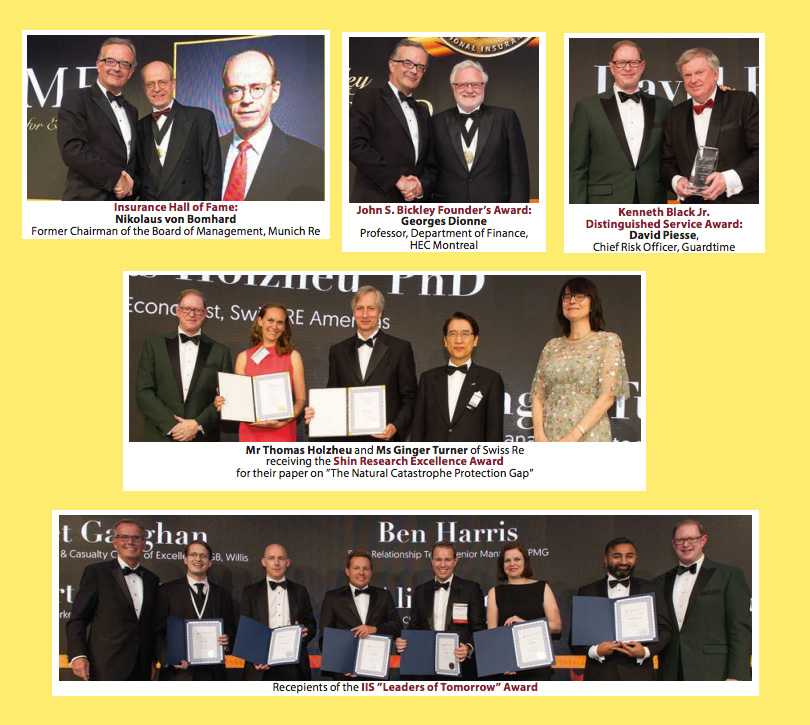
A gala occasion
Delegates dressed in their very best as they came together to celebrate excellence in the insurance industry.
